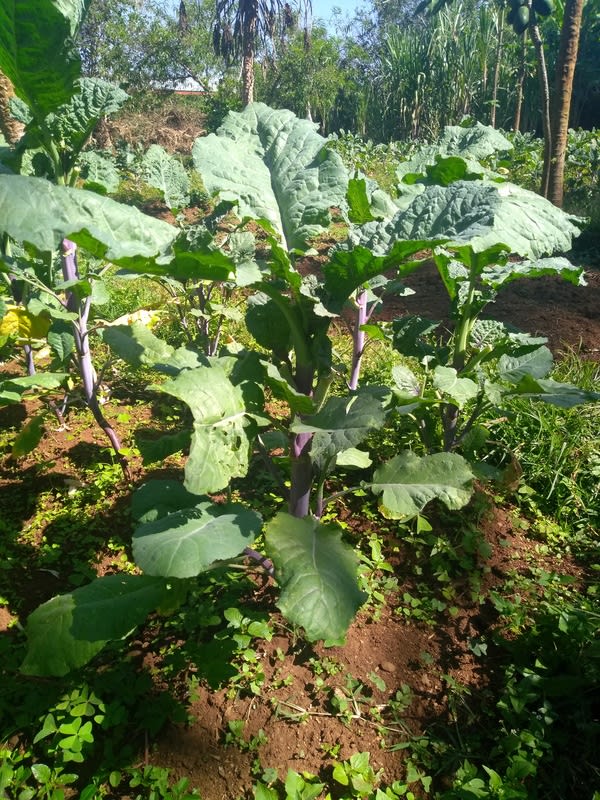Ethiopian mustard, Abyssinian mustard, Texsel greens, Mustard cabbage, Karinka
Brassica carinata

🌿 Morphology
🌞 Growing conditions
🌍 Origin and family
🌾 Uses
Warning: Despite the care taken in writing this sheet, it is essential to cross-reference sources before using or consuming any plant. When in doubt, consult a qualified professional
Permaculture uses
Ethiopian mustard is primarily grown for its oil-rich seeds, which can be processed into biofuel or used in industrial applications. The young leaves are edible and can be used in salads or cooked like other greens. It can also be used as a cover crop to improve soil health and suppress weeds. The plant's deep roots help to break up compacted soil. Some cultivars are bred for higher oil yields or improved forage quality.
Permapeople description
Brassica carinata is a species of mustard plant. It is cultivated for its oil-rich seeds and as a leafy vegetable. It is native to the Ethiopian Highlands.
Botanical description
Brassica carinata is an amphidiploid species derived from crosses between Brassica nigra (black mustard) and Brassica oleracea (cabbage, kale, broccoli, etc.). It is an annual or biennial herb, typically growing 1-2 meters tall. The stems are erect and branched. The leaves are variable, with lower leaves being lyrate-pinnatifid and upper leaves being lanceolate. Flowers are yellow, typical of the Brassicaceae family, and are borne in racemes. The fruit is a silique (a long, narrow capsule). Seeds are small and brown to black. It is more drought tolerant than other Brassica species.
Companion planting
Like other brassicas, Ethiopian mustard can be susceptible to pests such as aphids, cabbage worms, and flea beetles. It may benefit from companion planting with aromatic herbs like rosemary, thyme, or sage, which can help to deter pests. Avoid planting near other brassicas to prevent the spread of disease and pests. It can be used as a trap crop for diamondback moth larvae.
Propagation methods
Propagation is primarily by seed. Seeds should be sown directly into the ground or started indoors and transplanted after the last frost. Ethiopian mustard can also self-seed readily, potentially becoming weedy in some environments.
History and traditions
Ethiopian mustard originated in the highlands of East Africa, particularly Ethiopia. It has been cultivated for centuries as a source of edible greens and oilseeds. Traditionally, the seeds have been used for cooking oil and the leaves as a leafy vegetable. In some cultures, it has been used medicinally for its potential anti-inflammatory and antioxidant properties. It has gained more attention recently as a potential biofuel crop.
Usage calendar
Planting: Spring or early Summer. Flowering: Summer. Harvesting (seeds): Late Summer to Fall. Harvesting (greens): Throughout the growing season.
